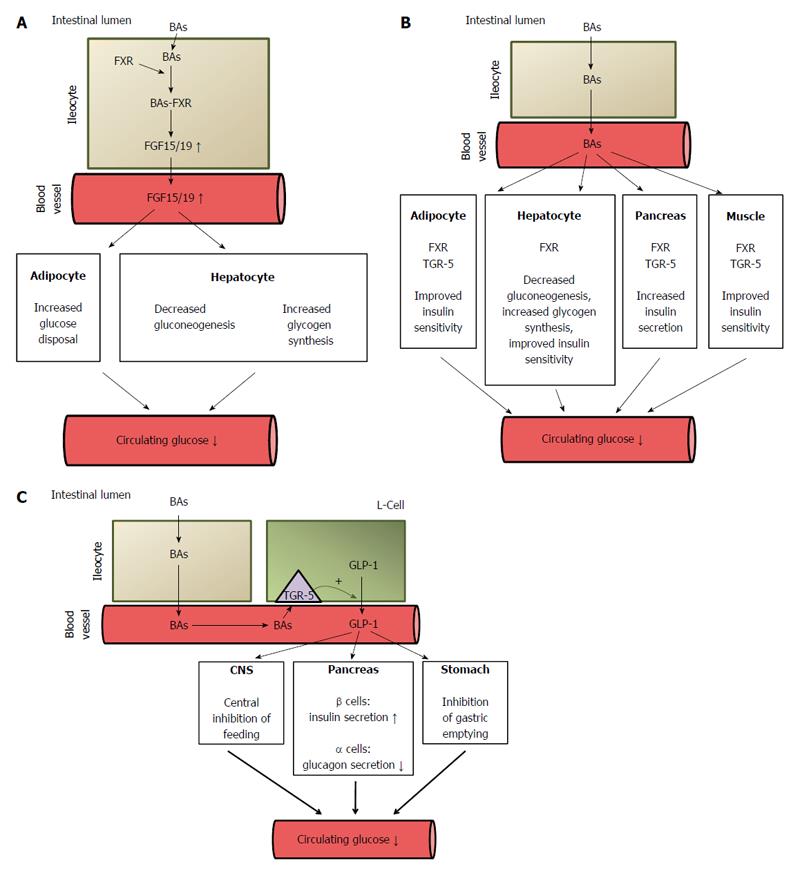Copyright
©The Author(s) 2016.
World J Gastroenterol. Oct 21, 2016; 22(39): 8698-8719
Published online Oct 21, 2016. doi: 10.3748/wjg.v22.i39.8698
Published online Oct 21, 2016. doi: 10.3748/wjg.v22.i39.8698
Figure 7 Potential mechanisms of bile acid mediated improvement of serum glucose concentration.
A: Stimulatory effect of bile acids on FGF15/19 synthesis in intestinal cells (ileocytes). The activation of FXR in ileocytes by BAs leads to increased synthesis (via regulation of gene expression) and the release of fibroblast growth factor 15/19 (FGF 15/19) which, through the activation of the FGF-R present in hepatocyte and adipocyte membranes, regulates carbohydrate metabolism, leading to a decrease in circulating glucose concentrations. FGF 15/19 stimulates glycogen synthesis and inhibits gluconeogenesis in the liver and glucose disposal in adipose tissue. ↓: Decrease; ↑: Increase; B: Decreasing effect of BAs on circulating glucose concentration. BAs, by activating FXR, downregulate (via regulation of gene expression) liver gluconeogenesis and stimulate glycogen synthesis. BAs, by binding to FXR or to TGR-5 in pancreatic β-cells, stimulate insulin secretion. BAs, by binding to FXR or TGR-5 in adipose tissue and skeletal muscle, improve insulin sensitivity. ↓: Decrease; C: Potential mechanisms of BA-mediated decrease in circulating glucose concentrations after bariatric surgery caused by the increased release of GLP-1 by intestinal L-cells. ↓: Decrease; ↑: Increase. FXR: Farnezoid X receptor; FGR: Fibroblast growth factor; GLP: Glucagon-like peptide-1; BAs: Bile acids.
- Citation: Kaska L, Sledzinski T, Chomiczewska A, Dettlaff-Pokora A, Swierczynski J. Improved glucose metabolism following bariatric surgery is associated with increased circulating bile acid concentrations and remodeling of the gut microbiome. World J Gastroenterol 2016; 22(39): 8698-8719
- URL: https://www.wjgnet.com/1007-9327/full/v22/i39/8698.htm
- DOI: https://dx.doi.org/10.3748/wjg.v22.i39.8698









